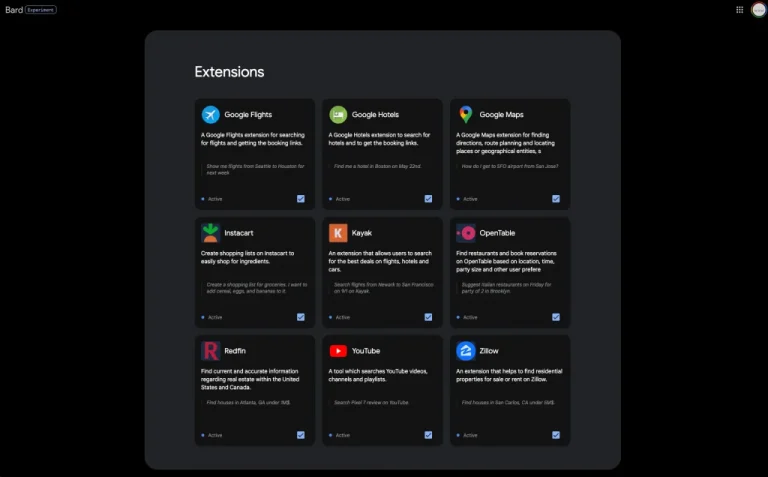As per the 9to5Google reporting, while Bard may not have been the first of its kind or the catalyst for the AI chatbot revolution, Google has been tirelessly enhancing Bard’s capabilities. Recent advancements have brought about improvements in reasoning, mathematical prowess through Python code, and the ability to export tables to Google Sheets. And now, we’re getting a glimpse of what’s to come with the introduction of extensions.
During this year’s annual I/O developer conference, Google emphasized Bard, unveiling plans to optimize productivity by integrating the assistant with first-party Google services and popular third-party platforms such as Adobe Firefly. Among these extensions the Firefly extension stands out, enabling users to generate personalized images based on textual prompts akin to the renowned Midjourney AI.
While the extensions were not yet functional, the user interface (UI) appears fully prepared. These extensions will be accessible through a puzzle piece icon located in the upper right corner of Bard’s web UI. In a grid view format, all the extensions will be listed, accompanied by a brief description, a suggested prompt, an indicator to show whether they are active or inactive, and a checkbox allowing users to enable or disable each one.
Within the menu, users will discover helpful instructions on maximizing the potential of each Bard Extension, including practical examples like “Find houses in Atlanta, GA under 1M$.”
Furthermore, besides the services mentioned above, there are indications that Google is preparing a Workspace extension for Bard, as previously announced. This extension would grant the chatbot access to essential Google tools such as Docs, Drive, and Gmail.
Initially, Bard users can expect access to the same extensions that Google mentioned during the I/O conference:
- Google Flights
- Google Hotels
- Google Maps
- YouTube
- Instacart
- Kayak
- OpenTable
- Redfin
- Zillow
By incorporating these extensions, Bard’s responses are expected to become more comprehensive, mainly when providing historical data such as flight prices or typical traffic congestion in specific areas.



